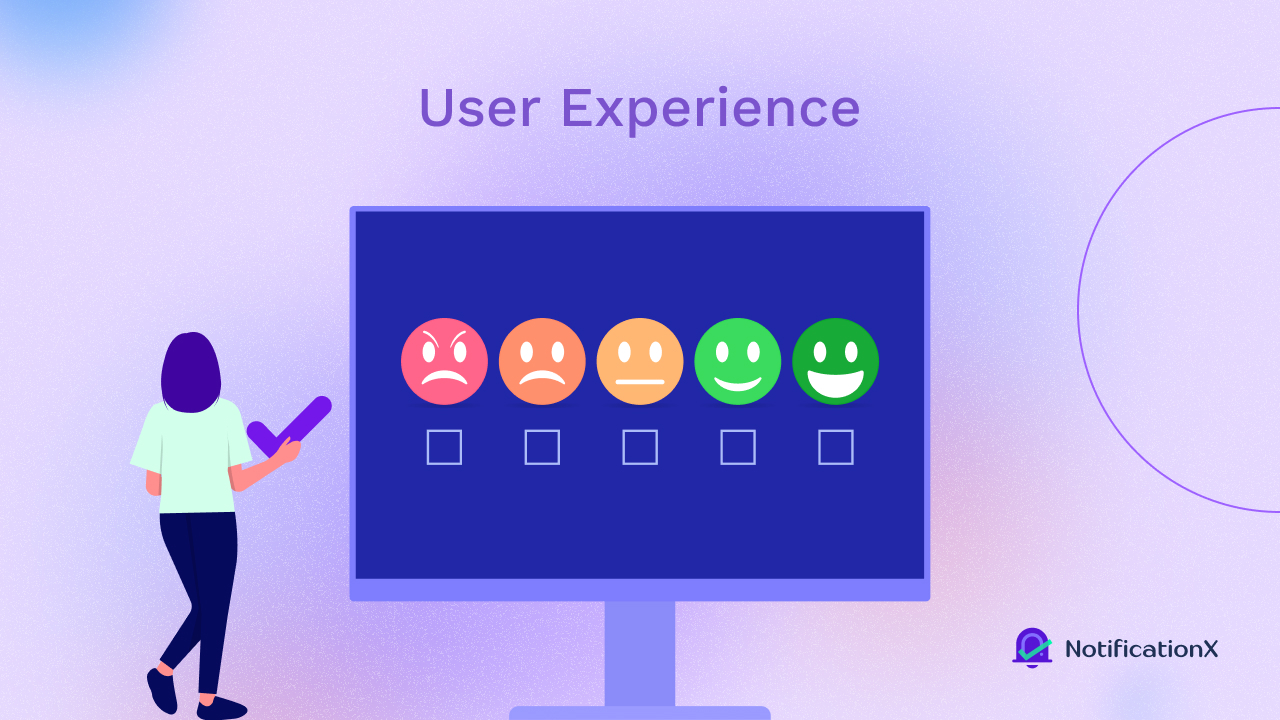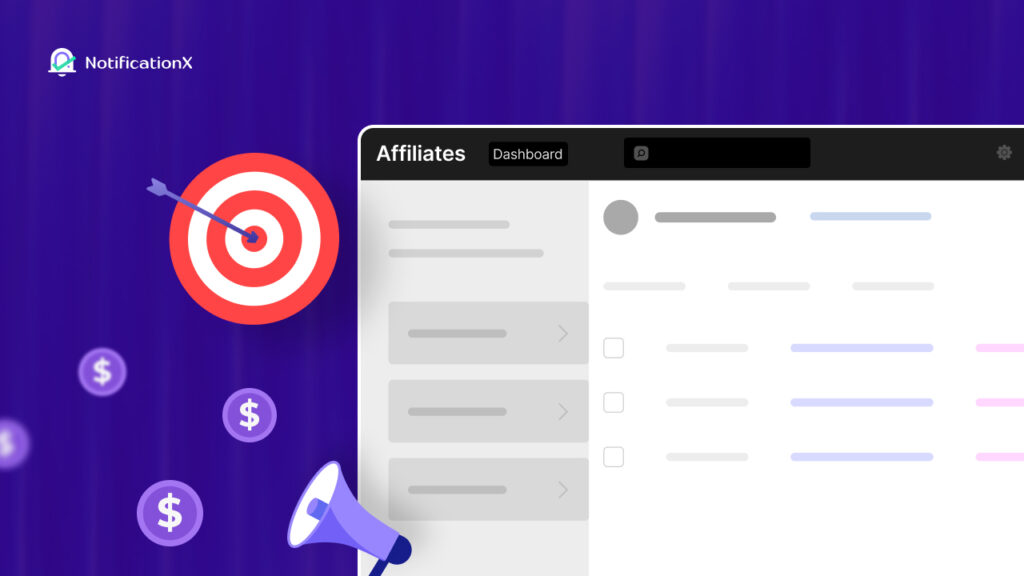Mid-market sales refer to the process of selling products or services to medium-sized businesses, typically those with moderate annual revenues. These companies are larger than small businesses but not as vast as large enterprises, making them a unique and lucrative segment to target. They have larger budgets and more complex needs than small businesses, yet they are more flexible and quicker in decision-making compared to large enterprises.

In this blog, we are going to explore Mid-Market Sales and break down all the essential details required for this topic to help you understand it.
Understanding the Mid-Market Sales Segment
The mid-market segment is a crucial part of the business landscape, often acting as a bridge between small businesses and large enterprises. Companies in this segment are typically more established than small businesses but not as large or complex as enterprises. Understanding the mid-market segment involves recognizing its unique characteristics and how it differs from other market segments.

Mid-market companies generally have the following characteristics:
- Revenue and Size: These companies typically have annual revenues ranging from $10 million to $1 billion. They often employ between 100 and 999+ employees.
- Operational Complexity: Mid-market companies are more complex than small businesses but less so than large enterprises. They often have multiple departments and a more structured hierarchy, including C-suite executives, directors, and various managers.
- Regional or National Presence: Many mid-market companies have a strong regional or national presence. They may not have the global reach of large enterprises but are often well-known within their industry or geographic area.
- Flexibility and Responsiveness: These companies are typically more flexible and responsive to market changes compared to larger enterprises. They can adapt quickly to new opportunities and challenges, which is a significant advantage in a dynamic business environment.
- Customer Base: Mid-market companies often have a dedicated customer base. They focus on building strong relationships with their clients, which helps in maintaining customer loyalty and driving repeat business.
- Innovation and Growth: Despite their size, mid-market companies are often leaders in innovation within their sectors. They contribute significantly to economic growth and job creation, frequently outperforming both smaller and larger counterparts in terms of resilience and adaptability.
How Mid-Market Sales Differ from SMB And Enterprise Sales

Understanding the differences between mid-market, SMB (small and medium-sized businesses), and enterprise sales is essential for developing effective sales strategies.
Sales Cycle Duration
- SMB: The sales cycle for SMBs is generally shorter, often less than four months, due to fewer decision-makers and simpler purchasing processes.
- Mid-Market: The sales cycle for mid-market companies is longer than SMBs but shorter than enterprises. It typically ranges from four to six months, though it can extend up to a year in some cases.
- Enterprise: Enterprise sales cycles are the longest, often taking between six to 18 months due to the complexity and number of stakeholders involved
Number of Decision Makers:
- SMB: SMBs usually have fewer decision-makers, often just the business owner or a small team.
- Mid-Market: Mid-market companies involve more decision-makers, including end users, directors, and C-suite executives, making the purchasing process more complex.
- Enterprise: Enterprises have the most complex decision-making processes, involving multiple departments such as finance, legal, and various executive levels
Sales Strategy And Approach:
- SMB: Sales strategies for SMBs focus on quick, straightforward transactions with a strong emphasis on relationship-building and immediate ROI.
- Mid-Market: Mid-market sales require a more nuanced approach, balancing relationship-building with detailed presentations and demonstrations to multiple stakeholders.
- Enterprise: Enterprise sales strategies are highly sophisticated, involving detailed research, multiple touchpoints, and long-term relationship management. The focus is on aligning the product or service with the enterprise’s strategic goals
Customer Pain Points:
- SMB: SMBs often face challenges related to growth, stability, and immediate operational needs.
- Mid-Market: Mid-market companies deal with more complex issues such as scaling operations, integrating new technologies, and managing a larger workforce.
- Enterprise: Enterprises focus on long-term strategic challenges, such as optimizing large-scale operations, managing extensive supply chains, and maintaining competitive advantages
Technology And Tools:
- SMB: SMBs may use basic CRM tools and automation to streamline their sales processes.
- Mid–Market: Mid-market companies often invest in more advanced CRM systems and sales automation tools to manage their more complex sales processes.
- Enterprise: Enterprises use highly sophisticated technology stacks, including advanced CRM, ERP systems, and custom sales solutions to handle their extensive and intricate sales operations
Benefits of Focusing on Mid-Market Sales
Focusing on mid-market sales can be highly advantageous for businesses looking to grow their revenue and establish stable, long-term customer relationships. Here are some key benefits:

Great Opportunity for Revenue Compared to SMBs
Mid-market companies typically have higher budgets and more substantial financial resources than small and medium-sized businesses (SMBs). This means they are willing to spend more on products and services that meet their needs. Here are some reasons why mid-market sales offer a larger revenue opportunity:
- Bigger Budgets: Mid-market companies often have annual revenues ranging from $10 million to $1 billion, which allows them to allocate more funds toward purchasing high-quality products and services.
- Willingness to Invest: These companies are more likely to invest in solutions that can drive significant improvements in their operations, productivity, and profitability. They understand the value of investing in quality and are prepared to pay a premium for it.
- Repeat Business: Once a mid-market company is satisfied with a product or service, they are more likely to become repeat customers, leading to ongoing revenue streams. Their larger budgets also mean they can afford to make more frequent purchases.
More Straightforward Lead Generation Than Enterprise Sales
Generating leads in the mid-market segment can be more straightforward compared to enterprise sales. Here is why:
- Less Bureaucracy: Mid-market companies typically have fewer layers of management and a simpler decision-making process compared to large enterprises. This reduces the complexity and time required to identify and engage with key decision-makers.
- Targeted Marketing: With a well-defined target audience, businesses can use more focused marketing strategies to reach mid-market companies. This includes account-based marketing, personalized outreach, and leveraging case studies that resonate with similar companies.
- Experienced Buyers: Mid-market buyers often have more experience in making purchasing decisions than SMB buyers. They know what they need and are more likely to engage with vendors who can demonstrate the value of their offerings.
Stability And Reasonable Expectations from Buyers
Mid-market companies offer a stable and reliable customer base with reasonable expectations. Here is how:
- Financial Stability: Mid-market companies are generally more financially stable than SMBs. They have established revenue streams and are less likely to go out of business, providing a more secure customer base for vendors.
- Reasonable Expectations: Buyers in the mid-market segment often have a clearer understanding of their needs and realistic expectations about what products and services can deliver. This makes it easier for vendors to meet their requirements and build strong, lasting relationships.
- Long-Term Partnerships: Mid-market companies value long-term partnerships with their vendors. They are more likely to stick around as customers if they receive consistent value and support, leading to higher customer retention rates
Challenges in Mid-Market Sales
Selling to mid-market companies presents unique challenges that require a nuanced approach. These challenges stem from the diversity and complexity of the companies, the intricate buying processes involving multiple stakeholders, and the need to adapt sales strategies to meet varied needs. Understanding these challenges is crucial for developing effective sales strategies.
Diversity And Complexity of Companies
Mid-market companies are diverse and complex, which can make selling to them challenging. Here are some key points to consider:
- Varied Industries and Sectors: Mid-market companies span a wide range of industries, from manufacturing and technology to healthcare and finance. Each industry has its own set of regulations, standards, and operational practices, which means sales strategies must be customized to fit the specific needs of each sector.
- Different Growth Stages: Mid-market companies can be at different stages of growth. Some may be rapidly expanding, while others might be stabilizing after a period of growth. This affects their purchasing decisions and priorities. For example, a rapidly growing company might prioritize scalable solutions, while a stabilizing company might focus on efficiency and cost reduction.
- Complex Organizational Structures: Unlike small businesses, mid-market companies often have more complex organizational structures with multiple departments and layers of management. This complexity requires a deeper understanding of the company’s internal dynamics and decision-making processes.
- Financial Constraints: While mid-market companies have larger budgets than small businesses, they still operate under financial constraints. They need to see a clear return on investment (ROI) and may require flexible pricing models, such as discounts, bundles, or phased payment options.
Navigating a More Complex Buying Process with Multiple Stakeholders
The buying process in mid-market companies is more detailed than in small businesses due to the involvement of multiple stakeholders. Here is how to navigate this complexity:
- Identifying Key Decision Makers: Mid-market sales often involve multiple decision-makers, including end users, department heads, and C-suite executives. Identifying and engaging all key players early in the process is important. Each stakeholder may have different priorities and concerns, so it’s important to customize your pitch to address their specific needs.
- Managing Group Dynamics: Communicating with multiple stakeholders can be challenging, especially when they have conflicting interests or priorities. Salespeople need to be adept at managing group dynamics, facilitating discussions, and building consensus among stakeholders. This often involves conducting thorough research and using a consultative sales approach to provide insights and solutions that address the diverse needs of the group.
- Longer Sales Cycles: The involvement of multiple stakeholders and the complexity of the buying process often result in longer sales cycles. Mid-market sales cycles can range from two to six months, or even longer in some cases. Patience and persistence are key, as is maintaining regular communication and follow-ups to keep the deal moving forward.
- Balancing New Deals with Customer Success: While acquiring new clients is important, it is equally crucial to focus on customer success and retention. Mid-market companies value long-term partnerships and expect ongoing support and value from their vendors. Balancing the pursuit of new deals with the need to ensure customer satisfaction and success is essential for building lasting relationships.
Developing a Mid-Market Sales Strategy
Creating an effective sales strategy for mid-market companies involves understanding their unique characteristics and challenges. This segment requires a customized approach that balances flexibility, thorough lead qualification, strategic use of automation, and a commitment to being a reliable partner. Here is a detailed look at each component of a successful mid-market sales strategy:
Importance of Flexibility in Mid-Market Sales Approach
Flexibility is crucial when selling to mid-market companies because of their diverse needs and varying stages of growth. Here is why flexibility matters:
- Adapting to Different Industries: Mid-market companies span various industries, each with its own set of challenges and requirements. A flexible sales approach allows you to customize your pitch and solutions to meet the specific needs of each industry.
- Customizing Solutions: Unlike small businesses that might be satisfied with off-the-shelf solutions, mid-market companies often require customized products or services. Being flexible means you can adjust your offerings to better fit their unique requirements, whether it is through modifying features, pricing structures, or service packages.
- Responding to Changes: Mid-market companies can experience rapid changes in their business environment. A flexible sales strategy enables you to quickly adapt to these changes, whether it’s a shift in their market, new regulatory requirements, or changes in their internal processes.
- Building Long-Term Relationships: Flexibility helps in building and maintaining long-term relationships. By showing that you can adapt to their evolving needs, you demonstrate your commitment to their success, which fosters trust and loyalty.
Qualifying And Segmenting Purchase-Ready Leads
Effective lead qualification and segmentation are essential for focusing your efforts on the most promising prospects. Here is how to do it:
- Develop a Lead Scoring System: Create a system to assign numerical values to leads based on their characteristics and behaviors. This helps in objectively evaluating leads and determining their readiness to purchase. Factors to consider include company size, industry, engagement with your content, and specific actions like requesting a demo or downloading a whitepaper.
- Define Qualification Criteria: Establish clear criteria that align with your ideal customer profile. This includes factors such as budget, decision-making authority, and specific needs that your product or service can address. By defining these criteria, you can ensure that your sales team focuses on leads that are most likely to convert.
- Segment Leads: Once leads are qualified, segment them into different categories based on their readiness to buy. For example, you can have segments for hot leads (ready to buy), warm leads (interested but need more nurturing), and cold leads (not ready yet). This allows you to customize your follow-up strategies accordingly.
- Regular Review and Adjustment: Continuously monitor and refine your lead scoring and segmentation processes. Regularly review the performance of your system and make adjustments based on feedback and conversion rates to improve accuracy and effectiveness.
Utilizing Automation for Follow-Ups
Automation can significantly enhance the efficiency and effectiveness of your follow-up processes. Here is how to use automation:
- Automate Routine Tasks: Use sales automation tools to handle repetitive tasks such as data entry, lead qualification, and follow-ups. This frees up your sales team to focus on high-value activities like building relationships and closing deals.
- Email and SMS Automation: Automate the scheduling and sending of personalized emails and SMS messages to maintain engagement with prospects. This ensures consistent communication and helps move leads through the sales funnel more efficiently.
- Deal Management: Implement deal management tools to track every stage of a deal, from initial contact to closing. Automation can help organize, prioritize, and analyze deals, ensuring that no opportunities are missed and that the sales process is streamlined.
- Sales Contract Automation: Speed up the sales cycle by automating the creation, sharing, and signing of sales agreements. This reduces manual work and friction, allowing deals to close faster.
- Follow-Up Triggers: Set up automated triggers for follow-ups based on specific actions or time intervals. For example, if a lead downloads a whitepaper, an automated follow-up email can be sent to provide additional information or schedule a demo.
Understanding Customer Pain Points

Customer pain points are specific problems or challenges that customers face in their business operations. Identifying and addressing these pain points is crucial for developing effective sales strategies. Here are the main types of customer pain points and how to customize sales tactics to address them:
Financial, Productivity, Process, And Support Challenges
- Financial Challenges: Financial pain points revolve around the costs associated with purchasing a product or service. Customers facing financial challenges are often looking for cost-effective solutions that offer good value for money. They may be concerned about high upfront costs, ongoing expenses, or not getting enough return on their investment. Addressing these pain points involves demonstrating the long-term value of your offering, providing flexible pricing options, or showcasing how your product can help save money in the long run.
- Productivity Challenges: Productivity pain points are related to time and efficiency. Customers experiencing these issues are typically looking to optimize their operations, reduce time spent on certain tasks, or increase overall efficiency. They might be struggling with time-consuming processes, lack of automation, or tools that are not user-friendly. Solutions that address productivity pain points often include features that automate repetitive tasks, streamline workflows, or enhance ease of use.
- Process Challenges: Process pain points involve difficulties with internal or external processes, such as workflow inefficiencies, compliance issues, or integration problems with other tools. Customers facing these challenges are seeking ways to improve their operational processes, ensure compliance with regulations, or achieve better integration with existing systems. Addressing process pain points can involve offering customizable solutions, providing robust integration capabilities, or ensuring your product complies with relevant industry standards.
- Support Challenges: Support pain points relate to the level of customer service and support provided. Customers may feel frustrated by slow response times, lack of available resources, or inadequate solutions to their problems. Addressing support challenges involves offering timely, helpful, and accessible customer service. This can include providing comprehensive self-service resources, ensuring quick response times, and offering personalized support to meet the unique needs of each customer.
Customizing Sales Tactics to Address Pain Points
To effectively address customer pain points through your sales tactics, it is essential to customize your approach based on the specific challenges your customers are facing:
- Personalize Your Communication: Use the information you have gathered about your customer’s pain points to personalize your sales messages. Highlight how your product or service specifically addresses their unique challenges.
- Demonstrate Value: For customers concerned about financial challenges, focus on demonstrating the value and ROI of your offering. Use case studies, testimonials, or cost-benefit analyses to make your case.
- Showcase Efficiency Gains: For productivity and process pain points, emphasize the efficiency gains and time savings your customers can achieve. Provide examples or demos that showcase these benefits in action.
- Highlight Support and Resources: For those facing support challenges, highlight the quality of your customer service and the resources available to help them succeed. Share information about your support channels, response times, and any additional support services you offer.
Navigating the Buyer’s Journey in Mid-Market Sales
The buyer’s journey in mid-market sales is a complex process that requires a nuanced understanding of the unique challenges and opportunities presented by mid-market companies. These companies, typically defined by their annual revenues ranging from $10 million to $1 billion, occupy a distinct space in the market. They are larger and more complex than small businesses but not as vast as enterprise-level organizations. This unique positioning affects their purchasing decisions and processes, making the sales approach for mid-market companies significantly different from that of small businesses or large enterprises.
Unique Purchasing Decisions and Processes in Mid-Market Sales Companies
Mid-market companies often have more resources and a greater capacity for investment than small businesses, yet they face more constraints than large enterprises. This duality influences their purchasing decisions and processes in several ways:
- Decision-Making Structure: Unlike small businesses that may have a single decision-maker, mid-market companies often have a decision-making unit (DMU) comprising multiple stakeholders. This group may include executives, managers, and end-users, each with their own set of priorities and concerns.
- Budget Considerations: Mid-market companies are conscious of their budgets but are willing to invest in solutions that offer clear value. They seek a balance between cost and benefit, making it crucial for sales teams to articulate the ROI of their offerings.
- Need for Customization: These companies often require solutions that can be customized to their specific needs. Unlike small businesses that may opt for off-the-shelf products, mid-market companies look for flexibility and customization in the solutions they purchase.
- Longer Sales Cycles: The buying process in mid-market companies can be lengthy due to the involvement of multiple stakeholders and the need for a thorough evaluation. Sales teams must be prepared for a longer engagement period, often involving detailed demonstrations, trials, and negotiations.
Strategies for Engaging Mid-Market Sales Buyers
Successfully engaging mid-market buyers requires strategies that address their unique needs and decision-making processes:
- Understand the Decision-Making Unit (DMU): Begin by identifying all the stakeholders involved in the purchasing decision. Understand their roles, priorities, and pain points, and customize your communication to address the specific concerns of each member of the DMU.
- Demonstrate Clear ROI: Mid-market companies are focused on value. Prepare to demonstrate the ROI of your solution with concrete data and case studies. Show how your product or service can help them achieve their business objectives, reduce costs, or increase efficiency.
- Offer Customizable Solutions: Highlight the flexibility and customization options of your offering. Show how it can be adapted to meet the specific needs of the company. If possible, provide examples of how you have customized solutions for other mid-market companies.
- Engage in Consultative Selling: Adopt a consultative approach, where you work closely with the potential buyer to understand their challenges and offer solutions. This approach builds trust and positions you as a partner rather than just a vendor.
- Be Patient and Persistent: Recognize that the sales cycle will be longer and plan your engagement strategy accordingly. Maintain regular communication with the DMU, providing additional information and support as needed. Be patient but persistent, ensuring that your solution remains top of mind throughout the decision-making process.
- Use Technology and Tools: Utilize CRM and sales automation tools to manage and track your engagement with mid-market companies. These tools can help you maintain a consistent follow-up schedule and ensure that no opportunities are missed.
Automation And CRM Tools for Efficient Mid-Market Sales
Automation and CRM tools are powerful assets for mid-market sales teams. They help in managing customer relationships, automating repetitive tasks, and providing valuable insights that can drive sales growth. Here is how these tools can be used:

- Streamlining Sales Processes: Automation tools can handle repetitive tasks such as data entry, follow-up emails, and scheduling meetings. This frees up sales teams to focus on more strategic activities like building relationships and closing deals. For example, CRM systems like Copper automate tasks and sales workflows. Also, prompting sales reps to follow up on the next steps and ensuring that no opportunities are missed.
- Enhanced Customer Relationship Management: CRM tools help in managing customer relationships by keeping track of all interactions with a database of customer information. This ensures that sales teams have a complete view of each customer’s history and preferences, enabling personalized and effective communication. Tools like Campagne active offer features such as dynamic customer journeys and lead scoring, which helps in creating personalized experiences and prioritizing high-potential leads.
- Improved Collaboration: CRM systems facilitate better collaboration between sales and marketing teams by providing a unified platform for sharing information and insights. This alignment is crucial for ensuring that both teams work towards common goals and can effectively nurture and convert leads. For instance, by integrating a CRM system with WordPress, businesses can automate lead generation, contact management, and follow-up processes and effectiveness.
- Real-Time Insights and Reporting: Automation and CRM tools provide real-time data and analytics, allowing sales teams to monitor performance, track progress, and make informed decisions. These insights can help in identifying the most effective sales strategies, understanding customer behavior, and optimizing sales efforts.
- Scalability and Flexibility: As mid-market companies grow, their sales processes become more complex. CRM allows sales, marketing, and customer service teams to work together more effectively, resulting in improved customer experiences and increased sales conversions.
Keep Data in Tracking for Mid-Market Sales
Data is essential for understanding customer behavior, tracking buying intent, and qualifying leads, ultimately improving sales outcomes. By analyzing website interactions, email engagement, and social media activity, businesses gain insights into customer preferences and pain points, revealing crucial touchpoints for conversion.
Behavioral data helps identify leads with strong buying intent, allowing sales teams to prioritize promising prospects. Lead scoring assigns numerical values based on behavior and characteristics, quantifying the qualification process and highlighting leads ready for engagement.
Personalized engagement, informed by data, customizes communication to meet specific needs, enhancing sales interactions and conversion rates. Continuous data analysis enables ongoing optimization of sales strategies, ensuring they evolve with market demands.
Did you like reading the blog? Share your thoughts in our Communauté Facebook et abonnez-vous à nos blogs for more blogs like this.







